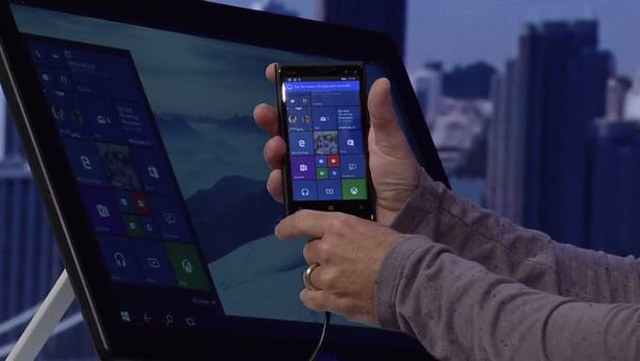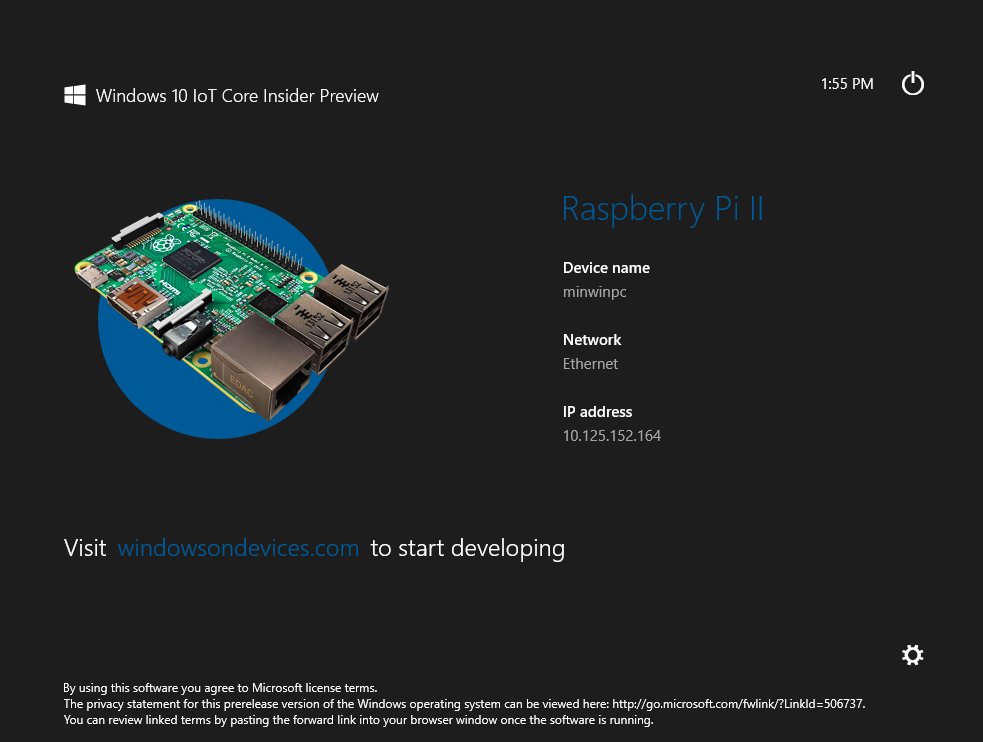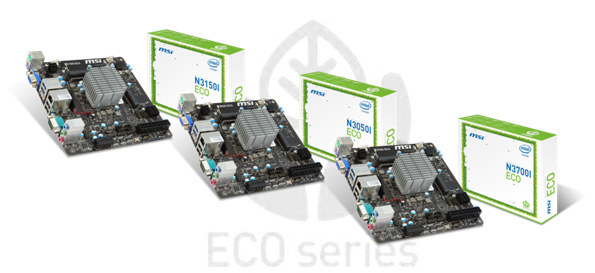I’m eagerly waiting for the day when Ubuntu convergence becomes reality, and I can run Ubuntu on a smartphone which I can also use as desktop PC. But Canonical is not the only company working on convergence and Microsoft has announced Continuum for Phones as part of Windows 10, that will bring desktop mode and support for dual independent displays to next-generation Windows 10 phones. To switch a Windows 10 smartphone to desktop mode, you’ll simply need to connect it to a desktop display, and Bluetooth keyboard and mouse, and it will automatically switch to a standard Windows 10 desktop on the big screen where you’ll be able to run apps like Microsoft Office, and other Universal Windows apps, as if it was running on an actual PC or laptop. The dual screen feature will allow you to check your emails on Outlook on a TV, while your kids watch […]
Windows 10 IoT Preview for Raspberry Pi 2 and MinnowBoard Max
When Raspberry Pi 2 Model B was released, we were promised a Windows 10 image for the board, and today, Microsoft released “Windows 10 IoT Core Insider Preview” for both the Broadcom BCM2836 based Raspberry Pi 2 and Intel Atom E3800 series based Minnowboard MAX boards. To get started with either board, simply go to Windows IoT – Getting Started page. I’ll quickly go through the instructions for Raspberry Pi 2. Beside the board, you’ll also need a PC running Windows 10 Insider preview (Virtual machine not supported), a 5V power supply, a HDMI cable (optional but recommended), an Ethernet cable, and a 8GB micro SD card, class 10 or better. The you’ll need to configure a connect account, where I had to accept two EULA including “Windows 10 IoT Core Insider Preview EULA”, and once this is done the area of the page for EULA should just be blank, […]
Intel Celeron N3000 2-in-1 Laptop, and MSI Motherboards with Celeron N3050/N3150 and Pentium N3700 Processors
Intel introduced the first low power Braswell Celeron and Pentium processors with 4 to 6W TDP, meaning a lower power consumption compared to Bay Trail-M processors, and with better performance. The first devices and motherboards based on these have started to show up with Intel’s Orchid Island 2-in-1 Reference Design based on Celeron N3000, and three MSI motherboards: N3050I ECO, N3150I ECO, and N3700I ECO respectively powered by Celeron N3050 dual core processor, Celeron N3150 quad core processor, and Pentium N3700 quad core processor, all clocked @ 1.6GHz (base frequency) and with 6W TDP. MSI did not release full details about their motherboards but we still now they’ll support H.265/HEVC hardware decoding up to 4K, Blu-ray playback and 8-channel HD Audio via an HDMI 1.4b port. Other connectors and interfaces include two DDR3L-1600MHz SO-DIMM slots (up to 8GB), two SATA III ports, one PCIe slot, Gigabit Ethernet, a COM port, […]





